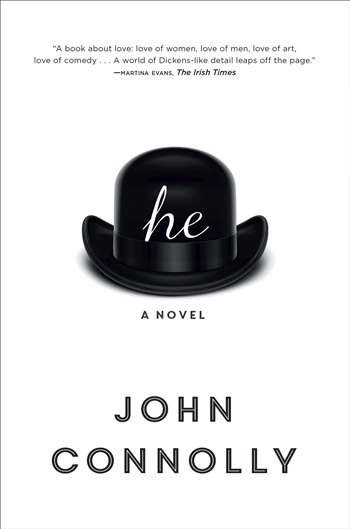
Although never referred to by name, the he of the eponymous “he” is comedian Stan Laurel, who with Oliver Hardy, was half of Laurel and Hardy, one of the most successful and beloved comic teams in the early 20th century. With only the pronouns of he or him, author John Connolly reimagines Laurel in both abstract and three-dimensional ways, getting to the soul of Laurel, the comic, the multi-married, forever-in-debt-with-alimony and alcoholic.
“He” has no plot and is written as a memoir and with a stream-of-consciousness approach with short chapters, some only a couple of paragraphs long, as Connolly looks at Laurel’s life and career, showing the man’s flaws and foibles. “He” also is a story of Old Hollywood when the medium of movies was just gearing up, a story of gossip, of myth and of what makes a legend. “He” is gracefully written and maintains its lyrical look at the comic, despite being a bit too long.
“He” alternates between Laurel’s last days in a Santa Monica apartment to his career that began around 1906 when the 16-year-old made his first appearance at a London music hall. Those early years were tough, noted for long hours and little pay. Along the way, Laurel met Charlie Chaplin, who long before he became a Hollywood star showed his genius, inspiring awe and jealousy among his fellow comics. “Chaplin is different, touched by a god, but which god? There is discipline in Chaplin’s anarchy …” Traveling on the same ship as Chaplin, Laurel finds the United States a series of cold flats and performances in sleazy theaters on the vaudeville circuit until he stumbles into the burgeoning movie industry.
Laurel and Oliver Hardy, affectionately known as Babe, both had careers in Hollywood before their accidental partnership. The Laurel and Hardy team was kismet for both comics, with more than 100 movies featuring their slapstick comedy from the late 1920s through the mid-1940s. The two men were genuinely fond of each other, and after Babe died, Laurel never again performed. Their careers were controlled by the early studio system, especially under manipulative producer Hal Roach, “a colorful man trapped in a black and white world” who staggered their contracts so neither could quit at the same time.
Connolly’s meticulous research touches on unfair contract negotiations, how sound changed the business and the treatment of actors and especially young actresses as disposable commodities. The unusual “He” also showcases Connolly’s varied talents. (AP)
 |
 |





